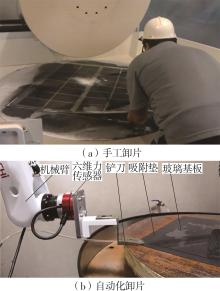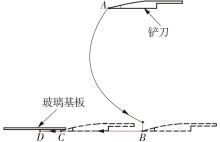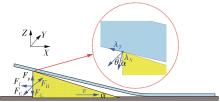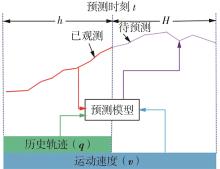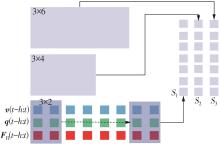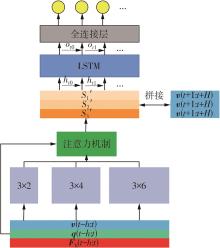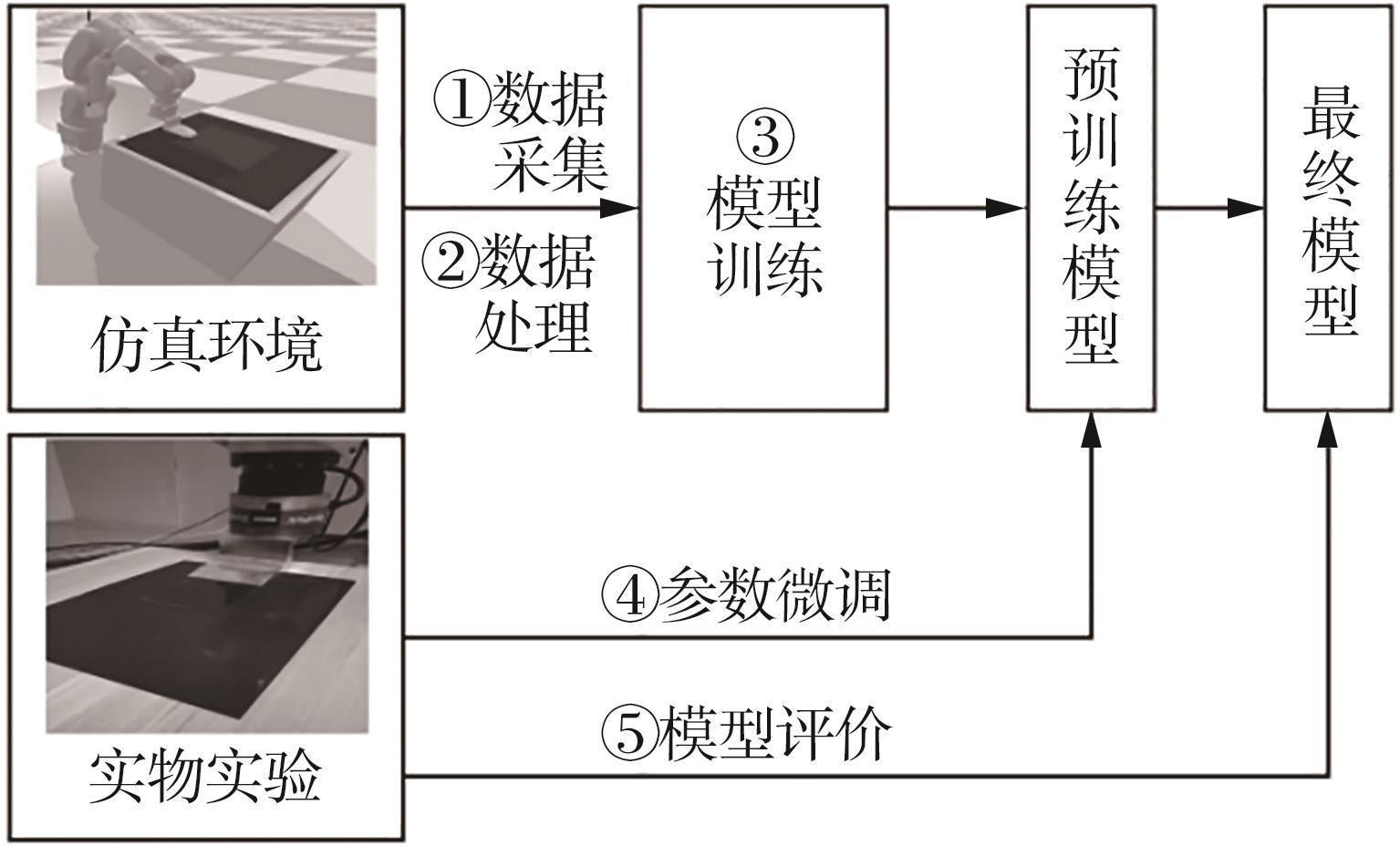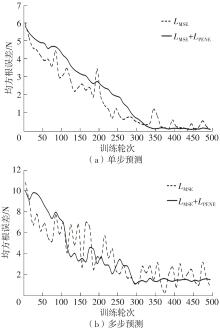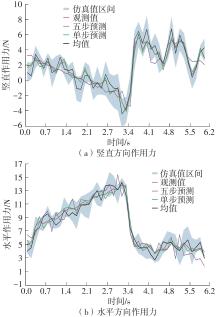Journal of South China University of Technology(Natural Science Edition) ›› 2022, Vol. 50 ›› Issue (8): 71-81.doi: 10.12141/j.issn.1000-565X.210698
Special Issue: 2022年机械工程
• Mechanical Engineering • Previous Articles Next Articles
Deep Learning-Based Prediction of Contact Force in the Process of Shoveling Up Glass Subtrate
HOU Liwei1 WANG Hengsheng1,2† ZOU Haoran1
- 1.College of Mechanical and Electrical Engineering, Central South University, Changsha 410083, Hunan, China
2.State Key Laboratory of High Performance Complex Manufacturing, Central South University, Changsha 410083, Hunan, China
-
Received:2021-11-04Online:2022-08-25Published:2022-03-18 -
Contact:王恒升(1963-),男,博士,教授,主要从事机电系统动力学建模与控制、工业机器人控制技术研究。 E-mail:whsheng@csu.edu.cn -
About author:侯力玮(1992-),男,博士生,主要从事机器人决策与规划算法研究。E-mail:lwhou1992@gmail. com -
Supported by:the National Natural Science Foundation of China(51975587)
CLC Number:
Cite this article
HOU Liwei, WANG Hengsheng, ZOU Haoran. Deep Learning-Based Prediction of Contact Force in the Process of Shoveling Up Glass Subtrate[J]. Journal of South China University of Technology(Natural Science Edition), 2022, 50(8): 71-81.
share this article
| 1 | 李继军,聂晓梦,李根生,等 .平板显示技术比较及研究进展[J].中国光学,2018,11(5):695-710. |
| LI Ji-jun, NIE Xiao-meng, LI Gen-sheng,et al .Comparison and research progress of flat panel display technology[J].Chinese Optics,2018,11(5):695-710. | |
| 2 | WANG L, ZHANG K, SONG Z,et al .Ceria concentration effect on chemical mechanical polishing of optical glass[J].Applied Surface Science,2007,253(11):4951-4954. |
| 3 | 王恒升,章壮,杨会义,等 .一种平板显示玻璃起爪装置、起爪机械臂、自动上下料装置及起爪装置的使用方法:CN108726174A[P].2018-11-02. |
| 4 | AYDINOGLU A, PRECIADO V M, POSA M .Contact-aware controller design for complementarity systems[C]∥Proceedings of the IEEE International Conference on Robotics and Automation.Paris:IEEE,2020:1525-1531. |
| 5 | POSA M, CANTU C, TEDRAKE R .A direct method for trajectory optimization of rigid bodies through contact[J].The International Journal of Robotics Research,2014,33(1):69-81. |
| 6 | MU X, WU Q .On impact dynamics and contact events for biped robots via impact effects[J].IEEE Transactions on Systems,Man,and Cybernetics,Part B (Cyberne-tics),2006,36(6):1364-1372. |
| 7 | KOLBERT R, CHAVAN-DAFLE N, RODRIGUEZ A .Experimental validation of contact dynamics for in-hand manipulation[C]∥Proceedings of the International Symposium on Experimental Robotics.Tokyo:IEEE,2016:633-645. |
| 8 | EREZ T, TASSA Y, TODOROV E .Simulation tools for model-based robotics:comparison of Bullet,Havok,MuJoCo,ODE and PhysX[C]∥Proceedings of the IEEE International Conference on Robotics and Automation.Washington DC:IEEE,2015:4397-4404. |
| 9 | 郭胤,王家序,李峰,等 .弹性体摩擦的黏滞疲劳理论及实验研究[J].摩擦学学报,2013,33(5):443-448. |
| GUO Yin, WANG Jia-xu, LI Feng,et al .Theory of adhesion hysteresis-fatigue of elastomeric tribology and experimental demonstration[J].Tribology,2013,33(5):443-448. | |
| 10 | FULLER D D .Theory and practice of lubrication for engineers[M].New York:Wiley,1984. |
| 11 | KOSHY C S, FLORES P, LANKARANI H M .Study of the effect of contact force model on the dynamic response of mechanical systems with dry clearance joints:computational and experimental approaches[J].Nonlinear Dynamics,2013,73(1):325-338. |
| 12 | FICUCIELLO F, MIGLIOZZI A, COEVOET E,et al .FEM-based deformation control for dexterous manipulation of 3D soft objects[C]∥Proceedings of the IEEE/RSJ International Conference on Intelligent Robots and Systems.Madrid:IEEE,2018:4007-4013. |
| 13 | NAGABANDI A, KONOLIGE K, LEVINE S,et al .Deep dynamics models for learning dexterous manipulation[C]∥Proceedings of the Conference on Robot Learning.Cambridge:[s. n.],2020:1101-1112. |
| 14 | BAUZA M, RODRIGUEZ A .A probabilistic data-driven model for planar pushing[C]∥Proceedings of the IEEE International Conference on Robotics and Automation.Singapore:IEEE,2017:3008-3015. |
| 15 | LI Y, WU J, TEDRAKE R,et al .Learning particle dynamics for manipulating rigid bodies,deformable objects,and fluids[C]∥Proceedings of the International Conference on Learning Representations.New Orleans:[s. n.],2019. |
| 16 | FAZILI N, KOLBERT R, TEDRAKE R,et al .Para-meter and contact force estimation of planar rigid-bodies undergoing frictional contact[J].International Journal of Robotics Research,2017,36(13):1437-1454. |
| 17 | AJAY A, WU J, FAZELI N,et al .Augmenting physical simulators with stochastic neural networks:case study of planar pushing and bouncing[C]∥Proceedings of the IEEE/RSJ International Conference on Intelligent Robots and Systems.Madrid:IEEE,2018:3066-3073. |
| 18 | GOLTS A, FREEDMAN D, ELAD M .Unsupervised single image dehazing using dark channel prior loss[J].IEEE Transactions on Image Processing,2019,29:2692-2701. |
| 19 | CRANMER M, GREYDANUS S, HOYER S,et al .Lagrangian neural networks[EB/OL].(2020-07-30)[2021-10-12].. |
| 20 | UTGOFF, PAUL E .Machine learning of inductive bias[M].Boston:Springer Science & Business Media,2012. |
| 21 | 何彦,凌俊杰,王禹林,等 .基于长短时记忆卷积神经网络的刀具磨损在线监测模型[J].中国机械工程,2020,31(16):1959-1967. |
| HE Yan, LING Junjie, WANG Yulin,et al .In-process tool wear monitoring model based on LSTM-CNN[J].China Mechanical Engineering,2020,31(16):1959-1967. | |
| 22 | PENG X B, ANDRYCHOWICZ M, ZAREMBA W,et al .Sim-to-real transfer of robotic control with dyna-mics randomization[C]∥Proceedings of the IEEE International Conference on Robotics and Automation.Brisbane:IEEE,2018:3803-3810. |
| 23 | JOZEFOWICZ R, WOJCIECH Z, ILYA S .An empirical exploration of recurrent network architectures[C]∥Proceedings of the International Conference on Machine Learning.Lile:[s. n.],2015:2342-2350. |
| 24 | COUMANS E .Bullet physics simulation[C]∥Proceedings of the ACM SIGGRAPH 2015 Courses.Los Angeles:[s. n.],2015. |
| 25 | HOU L W, WANG H S, LIU R H .Research on mo-deling and experiment of glass substrate peeling based on adhesion theory[J].Tehnički Vjesnik,2019,26(6):1827-1832. |
| 26 | 刘润华,王恒升,侯力玮 .玻璃基板无损剥离的建模与分析[J].制造业自动化,2020,42(2):36-41. |
| LIU Run-hua, WANG Heng-sheng, HOU Li-wei .Mo-deling and analysis of nondestructive peeling of glass substrate[J].Manufacturing Automation,2020,42(2):36-41. | |
| 27 | JANNER M, FU J, ZHANG M,et al .When to trust your model:model-based policy optimization[C]∥Proceedings of the Conference in Advances in Neural Information Processing Systems.Vancouver:[s.n.],2019:12519-12530. |
| 28 | FUNABASHI S, OGASA S, ISOBE T,et al .Variable in-hand manipulations for tactile-driven robot hand via CNN-LSTM[C]∥Proceedings of the IEEE/RSJ International Conference on Intelligent Robots and Systems.Las Vegas:IEEE,2020:9472-9479. |
| [1] | LI Fang, GUO Weisen, ZHANG Ping, et al.. Prediction Technique for Remaining Useful Life of Bearing Based on Spatial-Temporal Dual Cell State [J]. Journal of South China University of Technology(Natural Science Edition), 2023, 51(9): 69-81. |
| [2] | SU Jindian, YU Shanshan, HONG Xiaobin. A Self-Supervised Pre-Training Method for Chinese Spelling Correction [J]. Journal of South China University of Technology(Natural Science Edition), 2023, 51(9): 90-98. |
| [3] | LI Jiachun, LI Bowen, LIN Weiwei. AdfNet: An Adaptive Deep Forgery Detection Network Based on Diverse Features [J]. Journal of South China University of Technology(Natural Science Edition), 2023, 51(9): 82-89. |
| [4] | GUO Enqiang, FU Xinsha. Dropped Object Detection Method Based on Feature Similarity Learning [J]. Journal of South China University of Technology(Natural Science Edition), 2023, 51(6): 30-41. |
| [5] | ZHAO Jiandong, JIAO Lanxin, ZHAO Zhimin, et al. A Car-Following Model Driven by Combination of Theory and Data Considering Effects of Lane Change of Side Cars [J]. Journal of South China University of Technology(Natural Science Edition), 2023, 51(6): 10-19. |
| [6] | YE Feng, CHEN Biao, LAI Yizong. Contrastive Knowledge Distillation Method Based on Feature Space Embedding [J]. Journal of South China University of Technology(Natural Science Edition), 2023, 51(5): 13-23. |
| [7] | MO Jianwen, ZHU Yanqiao, YUAN Hua, et al. Incremental learning based on neuron regularization and resource releasing [J]. Journal of South China University of Technology(Natural Science Edition), 2022, 50(6): 71-79,90. |
| [8] | LU Lu, ZHONG Wenyu, WU Xiaokun. Image tampering localization based on mutil-scale transformer [J]. Journal of South China University of Technology(Natural Science Edition), 2022, 50(6): 10-18. |
| [9] | ZHANG Qin, HU Jiahui, REN Hailin. Intelligent Pushing Method and Experiment of Feeding Assistant Robot [J]. Journal of South China University of Technology(Natural Science Edition), 2022, 50(6): 111-120. |
| [10] | YANG Chunling, LING Xi, LÜ Zeyu. Feature-domain Multi-Hypothesis Prediction Reconstruction Neural Network for Compressed Video Sensing [J]. Journal of South China University of Technology(Natural Science Edition), 2022, 50(6): 80-90. |
| [11] | WO Yan, LIANG Jiyun, HAN Guoqiang. A cross-modal face retrieval method based on metric learning [J]. Journal of South China University of Technology(Natural Science Edition), 2022, 50(6): 1-9. |
| [12] | ZHAO Jiandong, ZHU Dan, LIU Jiaxin. Metro Transfer Passenger Flow Prediction Based on STL-GRU [J]. Journal of South China University of Technology(Natural Science Edition), 2022, 50(5): 22-31. |
| [13] | SU Jindian, HONG Xiaobin, YU Shanshan. Semantic Textual Similarity Justification based on Multi-Model Ensemble [J]. Journal of South China University of Technology(Natural Science Edition), 2022, 50(4): 1-9. |
| [14] | FENG Hao WANG Nian TANG Jun. Deep Multi-scale Attention Hashing for Large-scale Image Retrieval [J]. Journal of South China University of Technology(Natural Science Edition), 2022, 50(4): 35-45. |
| [15] | ZHENG Juanyi, MU Jinyu, XING Lirong, et al. Beamspace Channel Estimation Algorithm Based on Deep Compressed Sensing [J]. Journal of South China University of Technology(Natural Science Edition), 2022, 50(12): 101-108. |
| Viewed | ||||||
|
Full text |
|
|||||
|
Abstract |
|
|||||
